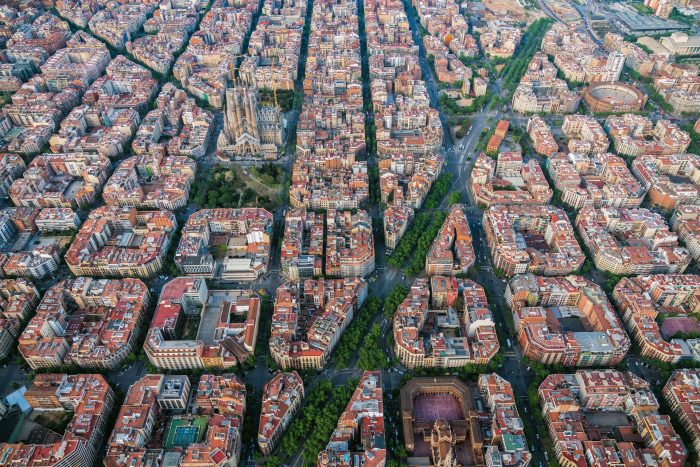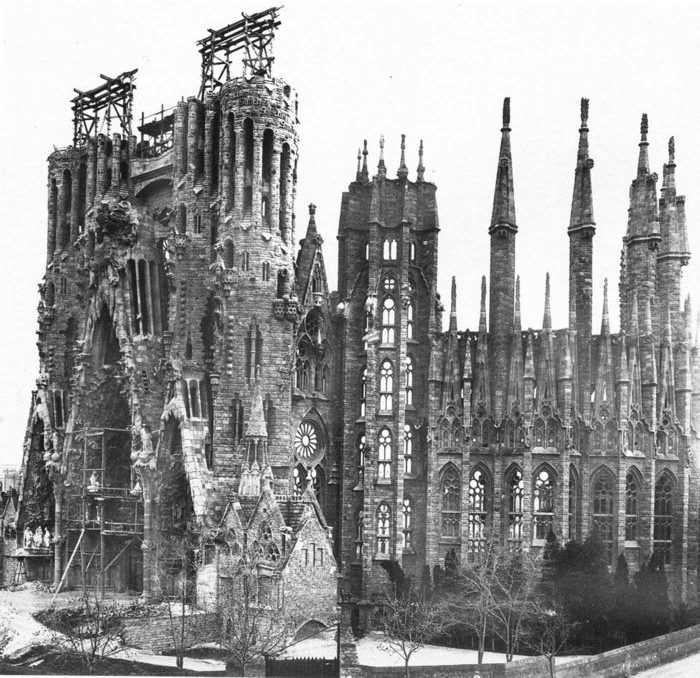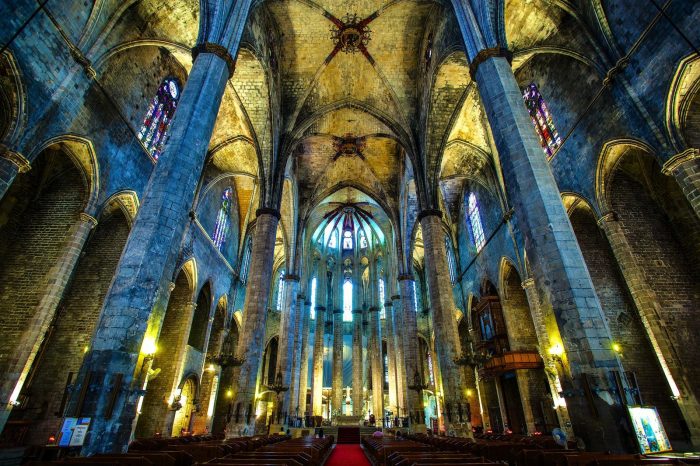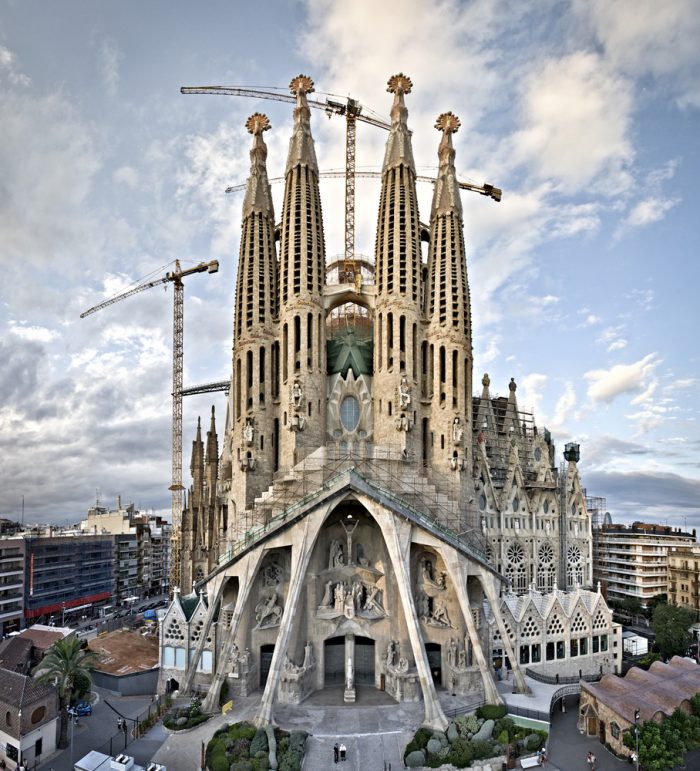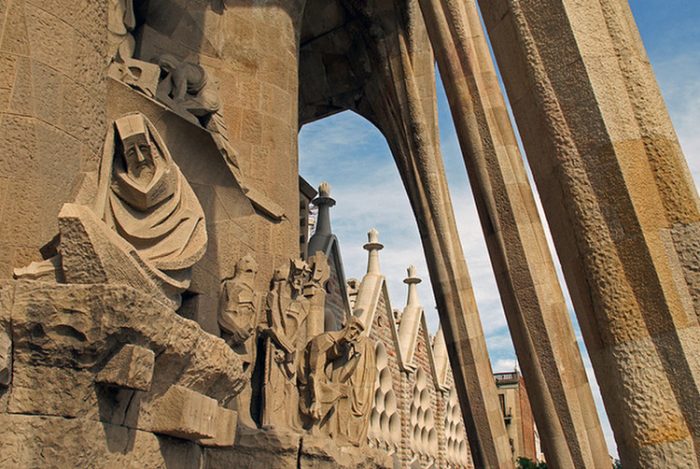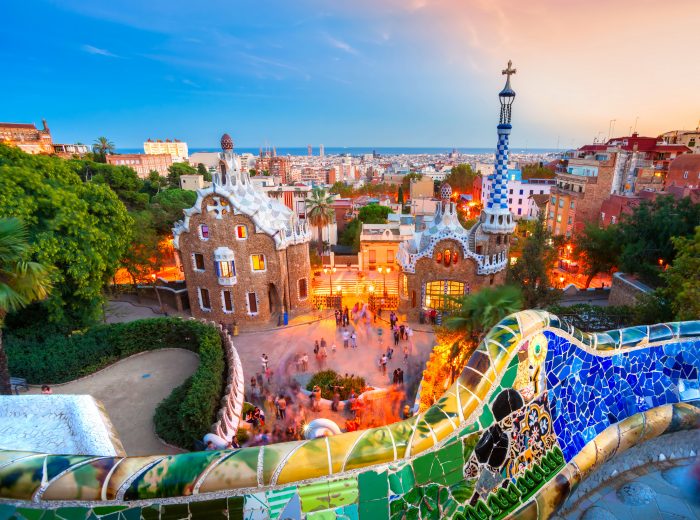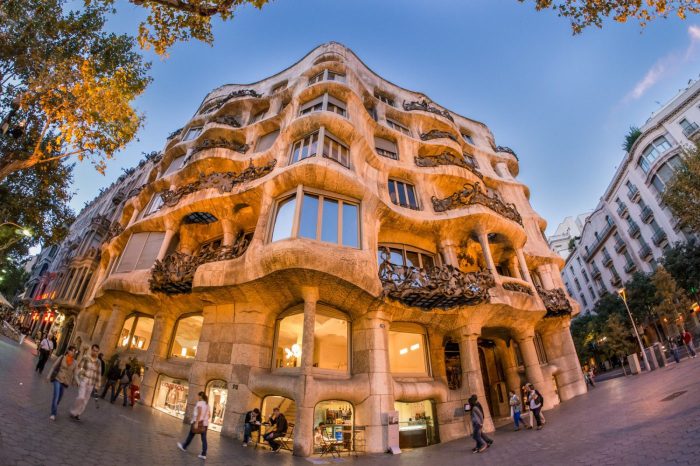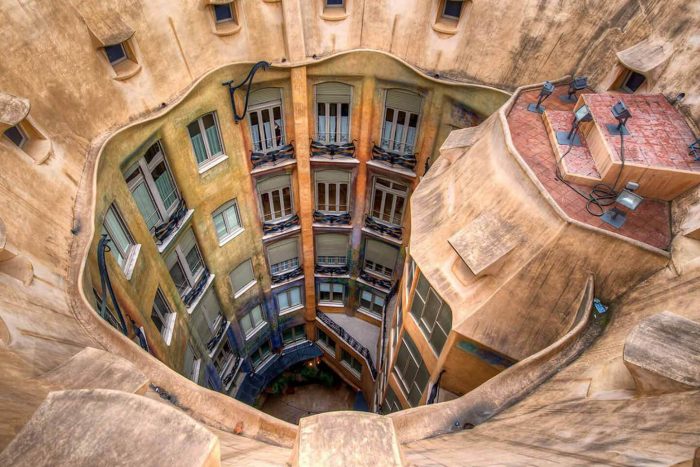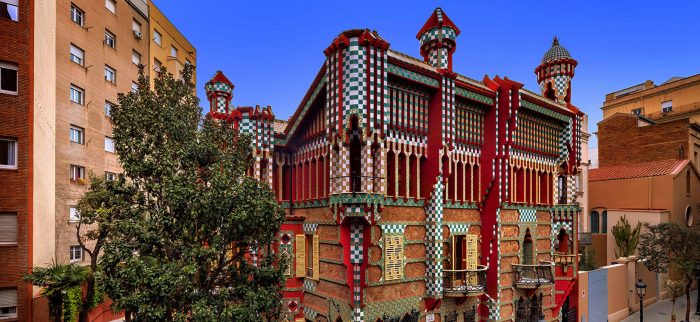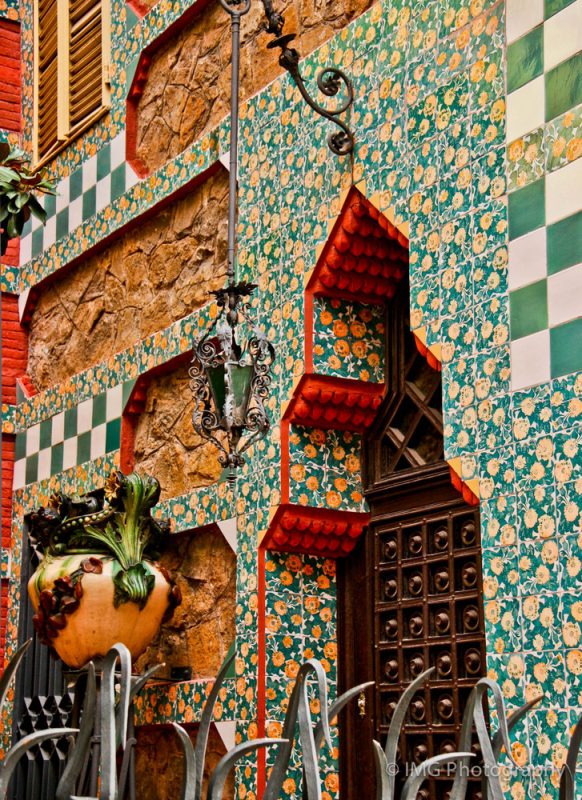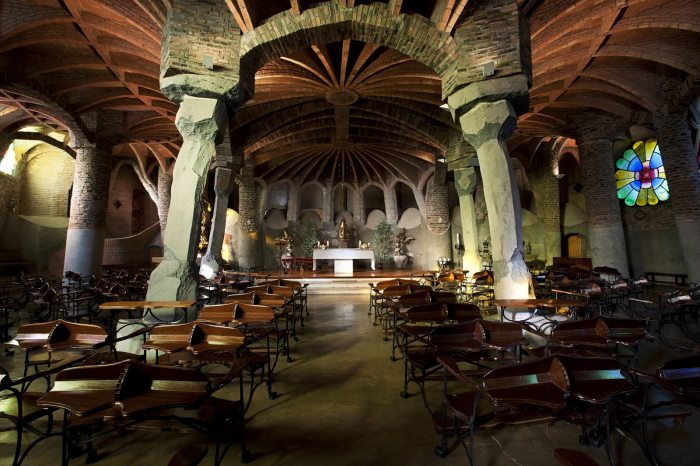Barcelona has done an outstanding job of fusing ancient and contemporary styles, creating a simply stunningly gorgeous city. When considering Barcelona’s architecture, rich, bold, colorful, distinctive, and unique aspects spring immediately into our minds. In this article, we’ll be trying to provide you with an affordable journey to Barcelona’s architecture, answering some questions about why this city has been known for its beautifully art-pieced architecture.
Barcelona’s Architecture History:
A particular economic and cultural rebirth occurred in the nineteenth century, represented in “Modernisme,” one of the city’s most productive and fruitful architectural movements. Until then, Barcelona’s growth was limited by walls that date back to the Middle Ages; therefore, the city was considered a military zone.
The situation changed after the walls were taken down, and the city received the Parc de la Ciutadella as a gift to be the city’s only green place, which allowed Barcelona to grow along the nearby plain. Several neighboring villages were annexed between the late nineteenth and early twenties centuries, introducing new urban spaces that helped update various styles Catalan architects produced.
The architectural growth in recent years, the commitment to design and innovation, and the link between urban planning, ecological values, and sustainability have turned Barcelona into one of Europe’s most innovative cities in terms of architecture, as evidenced by the countless honors and awards it had received.
Also read- Paris Architecture: The Remodeling of a Demolished City into a Polished One.
Barcelona’s Architecture Styles:
Behind Barcelona’s architectural uniqueness are essential checkpoints that affected its beauty and shaped its persona. These styles include:
1) Romanesque & Gothic:
Home of the oldest part of Barcelona, this style can be noticed clearly in Barcelona’s narrow streets through pointed arches, ribbed vaults, large windows, and elaborated artworks in wood, bronze, and oil paintings for interiors, as if time stopped in Middle Ages. A great example would be Santa Maria del Mar, whose octagonal towers, arches, buttresses, gargoyles, and rosettes perfectly blend Gothic and Romanesque architecture.
2) Catalan Modernism:
Modernism is a movement related to the seeking of a Catalan national identity associated with Catalonia and Barcelona from 1888 to 1910. When observing Modernism buildings, there are certain elements commonly used that distinguishes this movement apart from other. These elements include:
- Materials used as ceramics, mosaic tiles, and glass.
- Dynamic shapes were favored over fixed ones.
- Curves were primarily used more than straight lines.
- Floral and other natural features were used to decorate in rich shapes.
Antoni Gaudi and his most famous buildings:
We couldn’t keep discussing Barcelona’s architecture without crediting the all-time favorite Catalan architect Antoni Gaudi and his five gorgeously structured contributions. Gaudi was a Catalan architect who gained a global reputation for being a leader in the architectural field and a supporter of modern architecture. His extraordinary brilliance made him the creator of a unique, remarkable, and phenomenal architectural language that has defined Barcelona’s architecture up until this point.
1) La Sagrada Familia:
In 1882, more than a century ago, work on the Temple Expiatori de la Sagrada Familia began. The temple is still under construction, with a 2026 completion date. With over three million tourists each year, it is arguably the most widely recognized example of Catalan Modernism.
Including hyperboloids, parabolic arcs, helicoids, and conoids, La Sagrada Familia employs three-dimensional structures made of ruled surfaces. These intricate designs enable a smaller, sharper structure designed to improve the temple’s ambiance and lighting quality.
Every element of La Sagrada Familia contains religious iconography that Gaudi incorporated to depict Christianity visually. He created three prominent facades for the basilica: the Glory, Nativity, and Passion facades, which face south, east, and west, correspondingly.
2) Park Güell:
In this park built in 1900, Guadi brought fantasy to life and invented what is called Trencadís, a mosaic created by small fragments of broken ceramic. Gaudi showed his inspiration through nature in this park, from the flexibility of the design to the structure, from sculptures to motifs, which allowed these architectural pieces to blend smoothly with nature. Animals such as salamanders, snakes, octopuses, and lions were included and combined at different intersections, while flowers were presented via various designs around the park.
Also read:- How Did Scandinavian Architecture Master Simplicity While Persisting Luxury?
3) Casa Milà:
Also known as “La Pedrera,” meaning ‘The Quarry’ is a building constructed between 1905-1912. Architecturally speaking, this building is considered an imaginative visionary design due to the innovative elements Gaudi included that were both architecturally and philosophically distinguishable, beginning from the self-supporting front side of the building and the construction of underground car parking with separate stairs for the owners and their servants. Additionally, he wanted residents who lived to be familiar with each other, so he only included lifts on every second floor. Hence, people had to communicate with one another on different feet.
4) Casa Vicens:
The Casa Vicens, one of the first structures to spark the Modernism movement in Catalonia and Europe, was constructed between 1883 and 1885. The first significant project Antoni Gaudi ever received, Casa Vicens, inspired all of his subsequent architectural creations. A stock and currency agent named Manel Vicens I Montaner hired Gaudi to design his family vacation in the garden in the old district of Gràcia.
The modern-day’s multicultural neighborhood of Gràcia was once a separate town. As a result, the proposal did not account for the potential of additional buildings being constructed around it. As a result, it continues to stand alone to this day in an area distinguished by its tight structure, narrow streets, and dense population.
5) The Crypt of Colonia Güell:
Gaudi intended to construct a sizable church at Colonia Güell, but only the Crypt and entrance were completed between 1908 and 1914 due to financial issues caused by economic hardships. The Crypt explores how it interacts with Gaudi’s surroundings and how the various color hues of the local flora were incorporated into the building’s materials.
The Crypt from the inside conveys the beauty of the various forms that help compensate for Gaudi’s architectural solutions, such as the hyperbolic paraboloid walls, catenary arches, and the very detailed stonework on the brick roof of the Crypt.
Significant differences between Barcelona’s and Madrid’s architecture:
Madrid and Barcelona are two of the most architecturally distinctive cities in the world. They both have a long history, with their origins dating back to Roman times and the change they had over the years, with some parts of the two cities getting much more modern in recent decades.
We’ll just cut to the chase, Madrid is much more modern than Barcelona. Barcelona is much more historic, with many buildings dating back to the Middle Ages. Madrid’s architecture is characterized mainly by high-rise buildings than those in Barcelona. They’re often tall and narrow, making them look more like apartment buildings than buildings that serve as public spaces. On the other hand, buildings in Barcelona are much more varied, built in different styles, affected by Art Noveau, Modernism, and Gothic.
You may have figured out by now what is Barcelona’s secret to having some of the best architecture in the world. Barcelona will always be one of the majestic architectural destinations you’ll be inspired by, whether it’s Antoni Gaudi, Romanesque & Gothic styles, or Modernism styles. As you wander through its streets lined with distinctive buildings, you’d feel as though you are creating a sense of pleasing and intriguing movement you’ll probably not experience anywhere else.
Frequented asked questions about Barcelona architecture:-
Where is Gaudi architecture in Barcelona?
The Works of Antoni Gaud, a collection of seven structures, are scattered throughout Barcelona and the neighboring territories. These seven structures include - Casa Milà Provença, 261-265. - Casa Battló Passeig de Gràcia, 43. - Casa Vicens. Carrer de les Carolines, 24. - Park Güell. - Palau Güell. Carrer Nou de la Rambla, 3-5. - Colonia Güell. Calle Claudi Güell, Santa Coloma de Cervelló - Sagrada Familia. Carrer de Mallorca, 401. - Torre Bellesguard. Carrer de Bellesguard, 16.
What architecture is Barcelona famous for?
Barcelona is famous for its blend of Gothic and modern architecture. La Sagrada Familia by Antoni Gaudí is one of the most iconic buildings representing the unique architecture in the world.
Does Barcelona have a lot of art deco architecture?
Yes, it does. Whether Roman and the renaissance, modernism and post-modern, art nouveau and art deco, Barcelona has adopted many architectural styles and blended them all perfectly.


